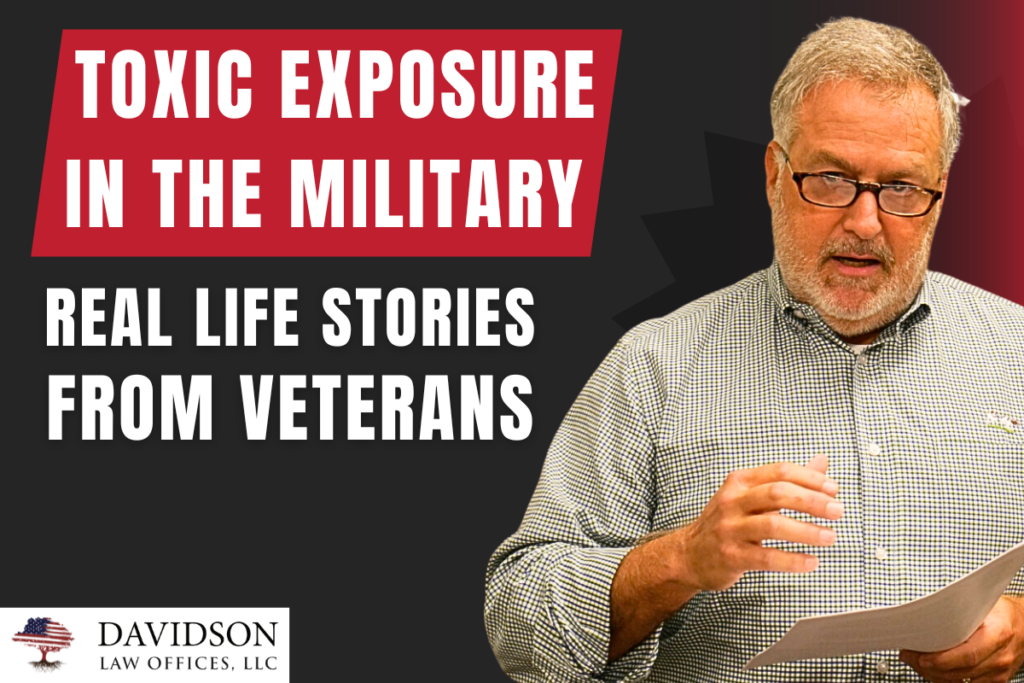In this blog I wanted to share a letter that we recently received from a Veteran suffering from multiple sclerosis. We’ll show the letter below and then examine the information in the letter as it relates to the disability claim this Veteran is seeking to obtain. Here’s the letter.
Multiple Sclerosis Letter
Dear VA Guy,
First of all, I apologize for the length of this letter, but it is important that you know why I’m asking for your help. Help for me and help for all Veterans and their families who have been exposed to toxins by our government.
I believe with all my heart that my exposures to toxins and PCBs, including but not limited to agent orange, while in the service of the US Army caused me to develop multiple sclerosis and ischemic heart disease.
Many years ago, I was diagnosed with multiple sclerosis from my exposure to toxic defoliants, PCBs, and other toxins from my service in the US Army. I honorably served in the US Army at Fort McClellan from May 1986 to January 1992. Fort McClellan closed in 1999. Tons of agent orange and other highly volatile substances like uranium and nerve gas were stored at Fort McClellan, exposing me and thousands of service members and civilians to these toxic chemicals and causing lasting damage.
During my service at Fort McClellan, I spent most of my time training outdoors and was exposed to various toxins that have left me 100% disabled. While training we bivouacked outdoors in areas sprayed with toxic defoliants and drank the ground water that was contaminated with PCBs and other toxins. We were told to put iodine tablets in our canteens to make the water safe for drinking.
There were three main sources of toxic exposure to me and those of us who worked and lived in Fort McClellan and the surrounding cities. The first source of toxic contamination came from Monsanto. They produced agent orange and other toxic herbicides. Each of these toxic herbicides was developed to focus on killing specific plant types. You may recall the movie about Monsanto and Erin Brokovich. The law firm she worked for sued Monsanto over their poisoning of Anniston, Alabama residents with a damage award of $700 million for 18,000 plaintiffs.
In Admiral Elmo R. Zumwalt’s 1990 “Report to the Secretary of the Department of Veterans Affairs on the Association Between Adverse Health Effects and Exposure to Agent Orange,” he quotes Dr. James Clary, former government scientist with the Chemical Weapons Branch, BW/CW Division, Air Force Armament Development Laboratory, Eglin AFB, Florida, as saying
“When we [military scientists] initiated the herbicide program in the 1960s, we were aware of the potential damage due to dioxin contamination in the herbicide. We were even aware that the ‘military’ formulation had a higher dioxin concentration than the ‘civilian’ version due to the lower cost and speed to manufacture. However, because the material was to be used on the ‘enemy,’ none of us were overly concerned. We never considered a scenario in which our own personnel would become contaminated with the herbicide.”
The second source of my contamination was from the myriad of nuclear, biological, and chemical (NBC) weapons — some dating back to World War 1 on Fort McClellan itself, as well as the herbicides using on Fort McClellan. The “Final US Department of Defense Base Realignment and Closure, Ordinance, Ammunitions, and Explosives, Chemical Warfare Materials, Conclusion and Recommendations (Revision 1) Fort McClellan” discusses the issue of NBC weapons and materials on Fort McClellan. This open-source DoD document states that nuclear, biological, and chemical materials were used, tested, and stored at Fort McClellan and that the areas involved were contaminated.
These areas were easily accessed by me and fellow soldiers stationed and working at Fort McClellan. While stationed at Fort McClellan, I had access to and trained in these contaminated areas. The risk assessment for the main post rates this installation as “Catastrophic,” “Category 1,” with the statement,
“There is evidence that exposure ordinance has been used at this site since 1912. There is also evidence that CWM contamination may also exist.”
In addition, a variety of herbicides (many of which contained PCBs) were used at Fort McClellan over the years. These herbicides were used to clear vegetation on the gunnery, shooting and training areas, ranges, and other bivouac areas at Fort McClellan. I was bivouacked in these contaminated areas and, of course, trained on the gunnery, shooting range, and other contaminated areas.
The third source of contamination was from the Anniston Army Depot. The depot is an active US Army installation. The installation provided munitions storage and refurbishment, testing, and decommissioning of combat vehicles and various types of ordinance. In the past, operations at the depot generated solid and liquid wastes that contaminated soil and groundwater.
The EPA placed a portion of the depot on the National Priorities List (NPL) in 1989. In 1990, the EPA and the Army agreed to address the entire depot under the Superfund and Resource Conservation and Recovery Act (RCRA) programs. The Army, EPA, and the Alabama Department of Environmental Management (ADEM) have investigated site conditions and took steps to clean up the depot in order to protect people and the environment from contamination.
Site investigations found combination in groundwater and soils that could potentially harm people in the area. Contaminants of concern include antimony, chromium, lead, thallium, and trichloroethylene. The Anniston Army Depot had also been routinely dumping detergents holding the chemical TCE into the public drinking water supply in the town of Anniston.
Fort McClellan purchased its water from Anniston. TCE by itself is not at all toxic. It is, however, toxic if swallowed. I am positive that I swallowed TCE while drinking water there. The contamination ended in the year 1987, a year after I was stationed there (1986). The remediation by the EPA began in 1983, so there was a four year declining period in TCE content as the cleanup continued.
People like me who lived and worked on Fort McClellan were targets for the PCBs and other contaminations, as well as nuclear, biological, and chemical toxins through the air, groundwater, and soil. I was lying on them on the firing range and on bivouac. I filled my canteen from the polluted streams and I breathed them while marching and running. The multiple contamination sources caused by Monsanto, Fort McClellan, and the Anniston Army Depot put me at a severe health risk. I am currently experiencing the debilitating results of this exposure and ingestion of these toxic contaminants.
I have applied for compensation, turned down, appealed, and done everything I know to do. Again, I apologize for the length of this letter. But I and others need your help.
Sincerely
Feeling Screwed by the Government
My Response
That’s a pretty scary letter to read. There was an Army Depot and Fort extremely close to civilian areas. Not only did a private company like Monsanto contaminate everything, but the Army was contaminating their own bases.
Now let’s talk about this Veteran’s disability claim. He applied for compensation but was denied. He thinks he’s done everything he can do. He does have a diagnosis of multiple sclerosis from a private physician.
The first question would be how is he linking his multiple sclerosis to his exposure to toxic chemicals during service at Fort McClellan? He has the service records to show he was there, but he needs to establish a connection between the toxic exposure and his multiple sclerosis. Unfortunately, his dilemma is one we see all the time.
We first need to look at all the evidence connecting his multiple sclerosis to toxic exposure. Under the relevant laws as they stand today, service connection can be granted for disabilities resulting from a disease like multiple sclerosis. You must first show the evidence of a persistent disability. You must then prove the in-service occurrence of the toxic exposure, and then establish a connection between the two.
Certain chronic diseases are subject to certain service connections if they were manifested within a given period — say one year within separation of service. But it all depends on the disease. Unfortunately in this Veteran’s case, multiple sclerosis has a seven year presumption of service connection. But he shouldn’t worry because there is a court decision that will help his multiple sclerosis case. If there is evidence of multiple sclerosis symptoms within seven years of separation of service (even prior to the official diagnosis), we can likely establish that service connection that he needs.
Unfortunately, he doesn’t get the advantage of using a presumptive list for agent orange because he didn’t serve in Vietnam. Additionally, multiple sclerosis isn’t on the presumptive list for agent orange exposure. But not all is lost. We can still help him establish a service connection for multiple sclerosis.
Contact Us So We Can Help!
If you need assistance with VA disability claims, complete this form or give us a call at (229) 226-8183. If you’d like to see this blog in video format, you can watch it below. Please be sure to SUBSCRIBE to our YouTube channel and click the bell notification button so that you’re notified each time we publish a new video.

